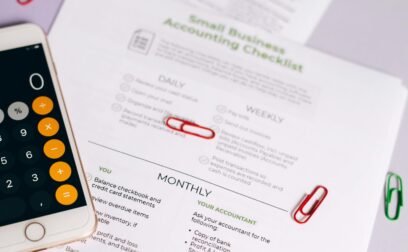No matter if your business is a limited company, PLC, partnership, or sole trader, there’s an operating lease for you.
Operating leases – don’t buy that business asset, pay less to rent it
Most Nigerian businesses need expensive assets to produce the goods and services they sell. These assets are typically cars, vans, plant and machinery. Without them, many businesses simply cannot function. However, buying big-ticket items can create problems with cashflow and for companies with seasonal finances, spending a large sum all at once may be impossible. But not to worry. Say hello to the operating lease – the low-cost way for businesses to secure the major tools they need.
Why spend more to buy when you can pay less to rent? Roll maintenance and repairs into the deal. An operating lease is fast, flexible and affordable. Give your business what it requires without creating a financial crunch.
How do they work?
An operating lease is a low-cost way for businesses to obtain the big-ticket items they need. Unlike purchase loans, the lessee, (you) does not buy the asset, you rent it and you cannot purchase the asset at the end of the contract.
In most cases (especially with business vehicles), the agreement will include a residual Value that is based on the period of the lease and the estimated value of the asset at the end of the contract. At the end of the agreement the asset is usually sold to a third party on behalf of the finance company. If the asset sells for more than the residual Value, the finance company will refund a percentage of the surplus back to you. If the asset sells for less than the residual Value, you will be liable to make a further payment to the finance company.An operating lease allows businesses to use the asset for a lower monthly cost than buying the asset with hire purchase. Operating leases may come with included maintenance and repairs.
What are operating leases used for?
Operating leases may be used to secure the use of a wide range of expensive business assets – including vehicles, plant, and machinery.
Accounting for an operating lease in Nigeria
To meet objective, a lessee’s commitment disclosure should recognise assets and liabilities arising from an operating lease as follows:
- Operating leases are shown as an asset on the balance sheet, valued as the present value of the lease payments (not the market value of the asset).
- The lease liability is shown on the balance sheet (similarly, the present value of the lease payments).
- The income statement shows an expense of the cash payment to the lessor within operational expenses.
- No interest expense or depreciation is shown in the income statement.
Are operating leases debt?
No. An operating lease is recorded on the balance sheet as an asset and the monthly rental payments are treated as operational expenses, not debt.
An example
ABC Plumbers need a new van for their business. Instead of paying cash or opting for a hire-purchase agreement that comes with higher monthly payments, they secure the van with an operating lease. It works like this:
- The van costs ₦20,000.
- The lessor (lender) offers to lease the van to ABC (the lessee) for ₦350 per month, including service costs, and for 48 months. The residual Value is set at ₦4,000.
- ABC pays one month deposit of ₦350 and drive their new vehicle away. Over 4 years, they pay a total of ₦16,800 for use of the van.
- At the end of the contract, the vehicle is sold for ₦5,500 – ₦1,500 more than the agreed residual value. The lessor passes 95% of ₦1,500 back to ABC. They receive ₦1,425 which they use to lease a new vehicle and put the surplus cash back into their business.
The pros and cons of operating leases

Pros
- The business may obtain a newer asset than if they were to buy it.
- Spreads the cost over time and at a fixed monthly price which will not go up even if bank interest rates rise.
- Allows a business to use an asset at a lower monthly cost than if they were to buy it with a hire purchase agreement.
- Low deposit – usually equal to the first month’s lease payment.
- Depending on the leased asset, the agreement may include maintenance and repairs.

Cons
- The asset returns to the lessor (lender) at the end of the contract period.
- May include a high residual value that could see the lessee paying more at the end of the contract.
- May include usage limitations – such as a mileage cap – that could cause the lessee to pay more at the end of the contract.
- The lessor owns the asset. If the lessee defaults on payment, the asset returns to the lessor.
Finance lease vs. operating lease
A finance lease is a long-term rental agreement with an option to buy the asset at the end of the contract. An operating lease is also a long-term rental agreement, but there is no option for the lessee to buy the asset. Operating leases typically have lower monthly costs and may require a smaller deposit than a finance lease. They will also usually include maintenance and repairs, and the lessee may be liable to residual payments at the end of the contract.
Capital lease vs operating lease
Both are long-term rental agreements, but they come with significant differences: A capital lease is similar to a finance lease, except that a capital lease is recognised as a form of purchase for tax purposes and the leased asset must be recorded on the balance sheet as a taxable item. Capital leases may give the lessee the option to buy the asset at the end of the contract. Operating leases provide no option to buy the asset, and typically have lower monthly costs and may require a smaller deposit than a capital lease.
Hire purchase vs operating lease
A hire purchase agreement lets the buyer purchase the asset over time, with the value of the asset repaid in equal instalments. The buyer always owns the asset when the contract ends. An operating lease is a long-term rental agreement that offers no path for the lessee to buy the asset at contract end. Operating leases typically have lower monthly costs and may require a smaller deposit than an HP agreement.
How Swoop can help
Finding the best operating lease for your business can be a complicated task, with a myriad of different rules, lease options, and tax considerations to navigate. Business owners seeking this type of funding may find themselves forever searching and making applications to lender after lender. Instead, working with a broker, who can access operating leases from a wide range of lenders is a better way to go. No more cold calls and endless demands for information. Even if you’ve been turned down elsewhere or have bad credit, simply tell us what you need and leave the rest to us.
How do I get started?
Register with Swoop to find the best rates, the best terms and the best operating leases for all your business needs.






